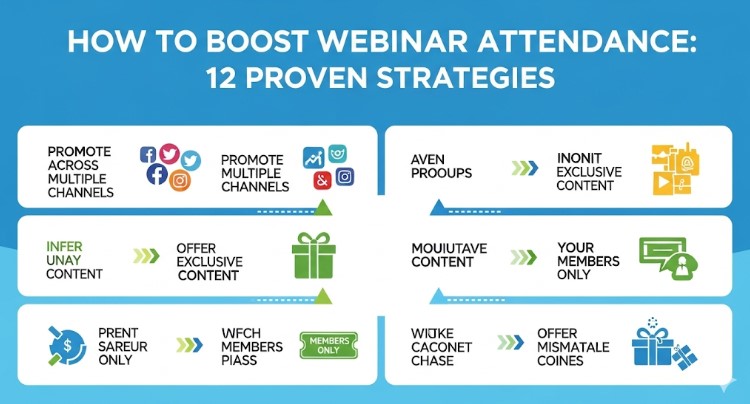The past few years have reshaped the way the world communicates and collaborates. Among these transformations has been the meteoric rise of virtual conferences, a trend that’s not only filled the void left by canceled physical events during COVID-19 but has also opened doors to a new era of connecting.
If you’ve wondered why virtual conferences have become the go-to solution for businesses, educators, and professionals post-pandemic, this blog will unpack the reasons, benefits, and challenges of online events; explore solutions for overcoming them; and take a peek into what the future holds for virtual events.
The Shift to Virtual Events
COVID-19 disrupted nearly every industry, forcing organizations to adapt at lightning speed. Conferences scheduled for bustling exhibition halls and meeting rooms pivoted to online platforms almost overnight.
Initially driven by necessity, this shift to virtual conferences began to uncover surprising advantages, such as increased accessibility and reduced costs. What started as a stopgap solution in a time of crisis is now reshaping the global events industry.
Post-COVID, the virtual and hybrid event market continues to grow at an immense pace. According to a report by Grand View Research, the virtual events market was valued at $114 billion in 2021 and is projected to grow at a compound annual growth rate (CAGR) of 21.4% between 2022 and 2030. Clearly, this digital revolution is here to stay.
Benefits of Virtual Conferences
Companies, event organizers, and attendees alike have embraced virtual conferences for a variety of compelling reasons.
1. Broader Accessibility
With virtual conferences, geographical boundaries vanish. Attendees no longer need to book expensive flights or take time off work to attend events physically. Instead, virtual platforms allow global participation with just an internet connection.
This inclusivity has particularly democratized access for professionals from smaller organizations and lower-budget industries who previously couldn’t justify attending large events.
2. Cost Efficiency
Traditional in-person conferences come with hefty price tags. Securing venues, catering, travel costs, and accommodations can quickly inflate event budgets. Virtual conferences reduce overhead significantly, providing value to both organizers and attendees.
For example, a McKinsey report noted that 35% of companies cited a 40-60% reduction in event production costs by going virtual.
3. Data-Driven Insights
With physical conferences, attendee metrics and feedback are often limited to post-event surveys. Virtual platforms bring a wealth of data, from session attendance metrics to time-spent analytics. This empowers organizers to tailor future events and demonstrate ROI to stakeholders.
4. Flexibility and Convenience
Virtual formats give attendees the freedom to join sessions live or rewind recordings later. This “content on-demand” approach allows participants to extract maximum value without experiencing FOMO.
5. Environmentally Friendly
Environmental sustainability has become a growing concern. Virtual conferences significantly lower the carbon footprint compared to in-person events. No flights, no plastic name tags, and fewer disposable collateral materials mean greener gatherings.
Challenges of Virtual Conferences
Despite these benefits, virtual conferences aren’t without their hurdles. Here’s a roundup of common challenges and how they can affect the user experience.
1. Tech Troubles
Connectivity issues or glitches with online platforms are often a major pain point. Nothing kills the excitement of a session faster than a frozen screen or garbled audio. Ensuring a reliable platform and proper rehearsal for speakers is vital.
2. Engagement Fatigue
“Zoom fatigue” is real. Virtual conferences often struggle to replicate the vibrancy of in-person networking and engagement. Sitting in front of a screen for hours can reduce audience attention spans.
3. Lack of Networking Opportunities
One of the main draws of physical conferences is the ability to bump into industry peers or strike up meaningful conversations by the coffee machine. Virtual platforms need to combat this by fostering dynamic digital networking through breakout rooms, live chats, and one-on-one video options.
4. Overwhelming Options
With virtual conferences happening globally, attendees can feel overwhelmed by choices. Multiply that by digital distractions at home, and capturing participants’ attention becomes a challenge.
Key Features of a Successful Virtual Conference Platform
Choosing the right platform is the foundation of a great virtual event. The most successful virtual conference platforms include these crucial features:
1. Interactive Tools
Live chat, polls, Q&A sessions, and gamification features make sessions more engaging. Platforms like Hopin and Zoom have leveraged these to create interactive conference experiences.
2. On-Demand Content
Attendees increasingly appreciate platforms that allow them to access recorded sessions at their convenience.
3. Networking Capabilities
Integrating virtual networking lounges, AI-driven matchmaking, and breakout rooms can replicate the serendipity of traditional conferences.
4. Custom Branding Options
White-label platforms allow hosts to fully customize designs, making the virtual environment feel on-brand and immersive.
5. Analytics Dashboard
Organizers benefit from in-depth metrics that track attendance rates, participant engagement, and session popularity for measuring success.
Case Studies: Successful Virtual Conferences
Some organizations have excelled at adapting to the virtual landscape with creative approaches and robust technology.
Event 1 – Adobe MAX
Adobe pivoted its prestigious creative conference, Adobe MAX, online in 2020, making all sessions free. The result? A record-breaking 21 million views from designers, creators, and marketers worldwide. Their approach combined exclusive content, live Q&As, and workshops to keep attendees hooked.
Event 2 – Microsoft Ignite
Microsoft seamlessly transitioned its developer-focused Ignite conference into an innovative virtual experience. Their addition of networking breakout rooms and live captioning ensured inclusion for attendees across all demographics.
These success stories underscore the potential of well-executed virtual conferences to make a lasting impact.
The Future of Virtual Conferences
The future of virtual conferences points toward hybrid models. Hybrid events combine the best of both worlds by offering in-person experiences for those who prefer them while maintaining virtual options for accessibility and convenience.
Advances in augmented reality (AR) and virtual reality (VR) are also expected to revolutionize online events, delivering immersive and interactive experiences. Platforms like Gather.Town offer examples of how gamified virtual events could evolve.
Additionally, conferences will continue becoming more data-driven, offering deeper insights for personalized event experiences as AI evolves in this sector.
As virtual events become more common, businesses are also reevaluating frequency — here’s a look at how many webinars your business should host per month.
Unlock the Benefits of Virtual Events in a Digital World
Virtual conferences represent a paradigm shift in how humans meet, share knowledge, and collaborate. While the challenges are real, the benefits far outweigh the drawbacks, positioning virtual events as a vital part of the business landscape moving forward.
Whether you’re a business leader planning your next event or a professional attending your first virtual conference, understanding this format’s opportunities will help you thrive in this digital-first era.
Interested in hosting a successful event? Explore platforms, compare tools, and adapt to the future of conferencing today!








Webinar Accessibility: Best Practices for Inclusive Online Events
Enhancing Webinar Accessibility: Best Practices for Inclusive Online Events
12 Proven Webinar Engagement Tips That Actually Work
How to Boost Webinar Attendance: 12 Proven Strategies